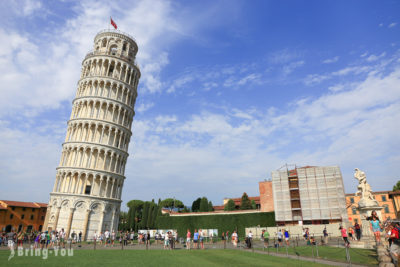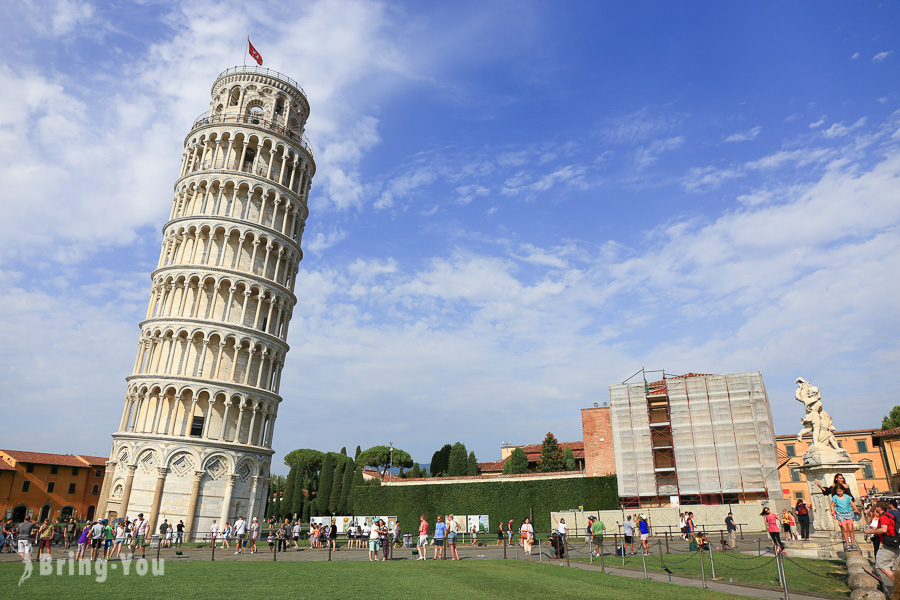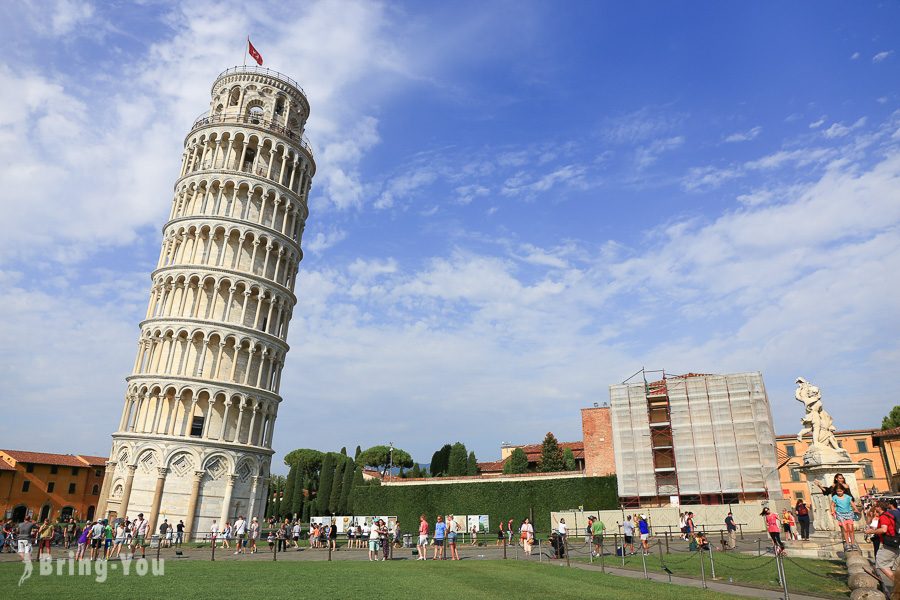
v²= 2gh
The formula for free fall caused by acceleration due to gravity was made famous by Galileo at the Leaning Tower Of Pisa.
Located as one of the three structures at the Piazza del Duomo, the world-renowned bell tower has been taking the world by storm with its otherworldly off-grid structure. After all these years since 1173 when the tower was constructed behind the Cathedral of Pisa in Italy, people still flock here to witness an iconic symbol in the physics book their teachers kept talking about.
But why is the tower leaning anyway?
Naturally, they hit the brakes on the construction. It wasn’t until almost two centuries later in 1372 that they finally finished the job. And guess what? It still had that famous lean to the southeast.
So, there you have it, a tower with a twist in its history and a tilt to its structure. However, the Leaning Tower of Pisa isn’t flying solo. In this article, I’ll show you how to get there from Florence by train for a visit, the cause behind its learning, as well as the best things to see and do.
How To Get To The Leaning Tower Of Pisa From Florence?
By Train
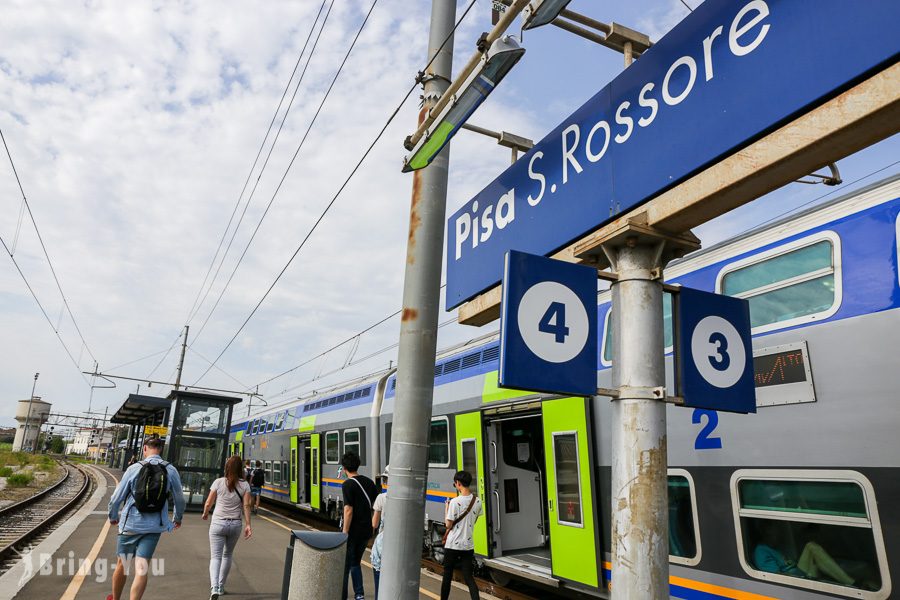
You have two train stations to reach the tower: Pisa Centrale and Pisa S. Rossore.
Pisa Centrale: is bigger with more frequent trains, both local and express. The station is roughly 20 minutes away on foot to the tower.
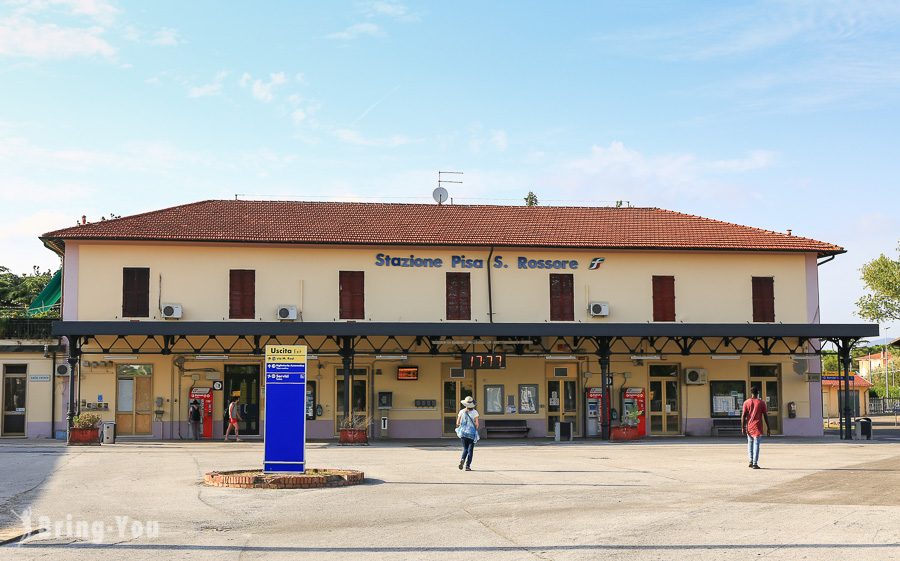
Pisa S. Rossore: is only ten minutes to the tower but there are fewer train connections and shuttle bus routes.
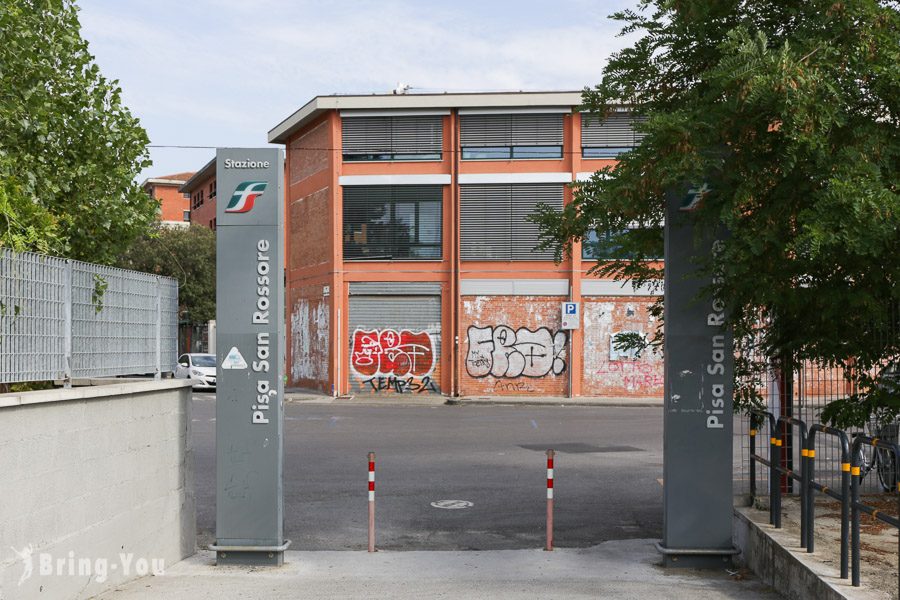
From Florence, depart at the Firenze SM Novella to Pisa Centrale. Keep an eye out for the timetable on the official website of the Italian National Railways. Tickets are available for purchase at the ticket vending machines that accept credit cards. Make sure to have your card at the ready as carrying cash on a trip is not the best resort. However, cash-only ticket machines are also available but the queues threaten to knock you down.
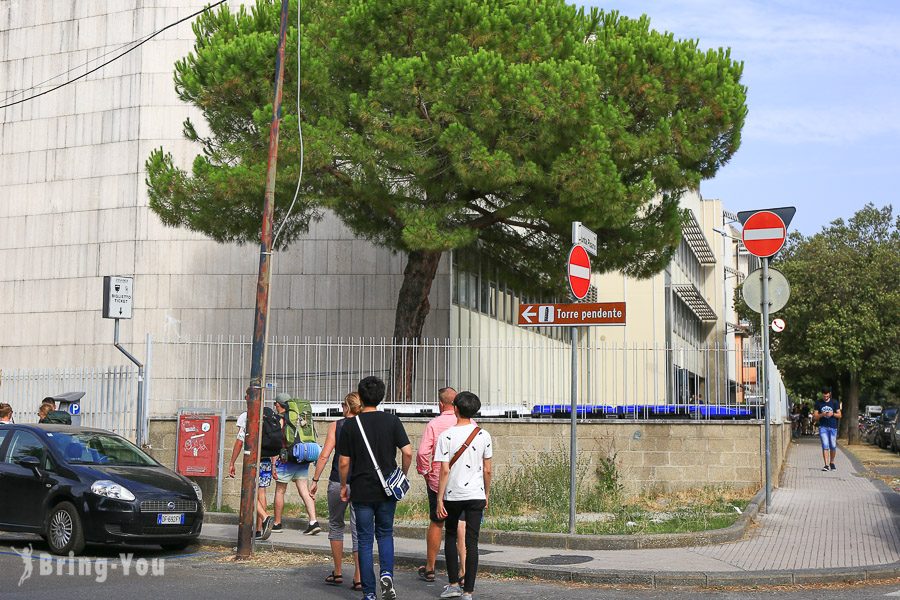
Once you’ve got the information from the website, jot down details of your trip and departure time as well as the terminal station. These details are only displayed on the electronic board and chances are you need to spare a good amount of time just to locate the right departure terminal and get on the right train.
Once you’re at Pisa Centrale, switch to a shuttle double-decker bus to Pisa S. Rossore Station. There are signs with patterns to show you where to head out or follow the crowd and don’t hesitate to ask for directions to the shuttle bus. The bus ride to the Leaning Tower is only ten minutes away from Pisa Centrale.
On the way to the tower, there’s a big market filled with authentic keepsakes for you to bring home.
Join An Organized Tour
If you’re short on time, opt for an organized tour. Tours to the tower range in various durations between five to seven hours with stops at other iconic landmarks around Florence.
Most trips depart from Florence with a stop over Lucca. Longer trips up to twelve hours are also available if you wanna cover Siena and San Gimignano within a day.
The Leaning Tower Of Pisa: A Sample Itinerary
Piazza dei Miracoli
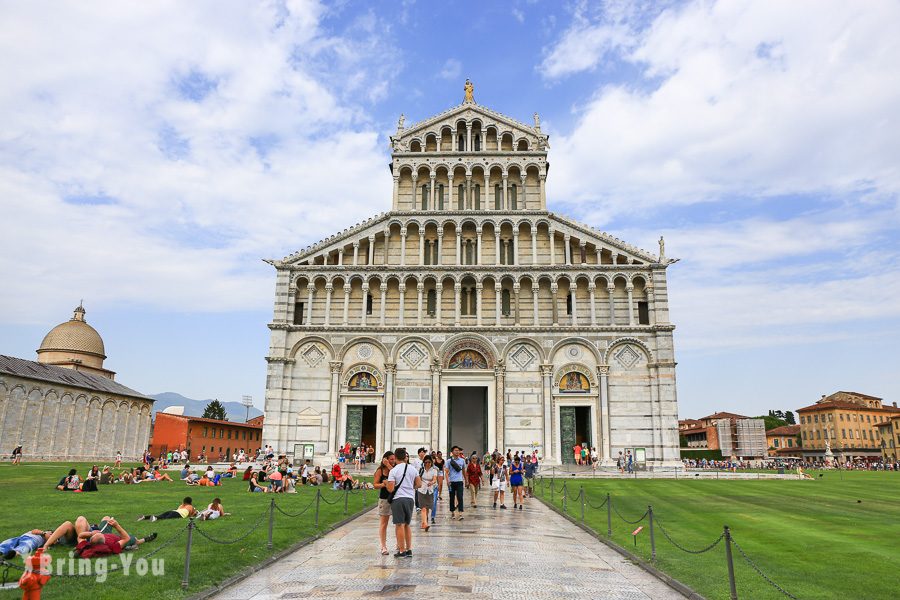
As you stroll past the bustling market and pass through a small arch in the wall, you’ll feel like you’ve entered a whole new world. More than just a meeting hub, Piazza dei Miracoli is steeped in religious significance and surrounded by sturdy walls, connecting Pisa to the vast landscape of Tuscany.
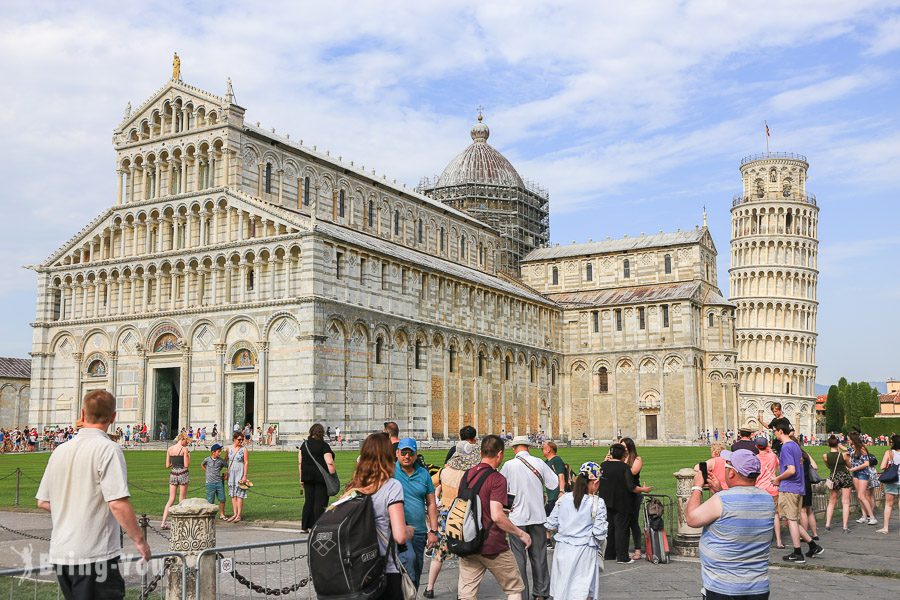
Right here, the world-famous Leaning Tower of Pisa stands tall, teaming up with the Pisa Cathedral next door. This holy shrine is a masterpiece in its own right, taking root from 1063 through the 13th century. Its intricate design and rich history make it a must-see.
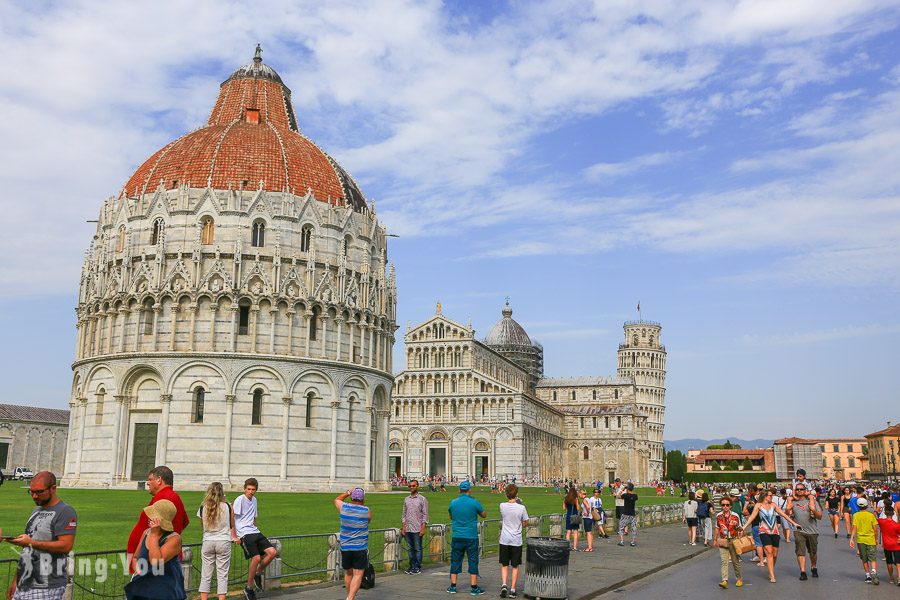
A few steps further is the Baptistery of St. John, a stunning structure that adds to the square’s charm. It’s been making a statement here since the 12th century.
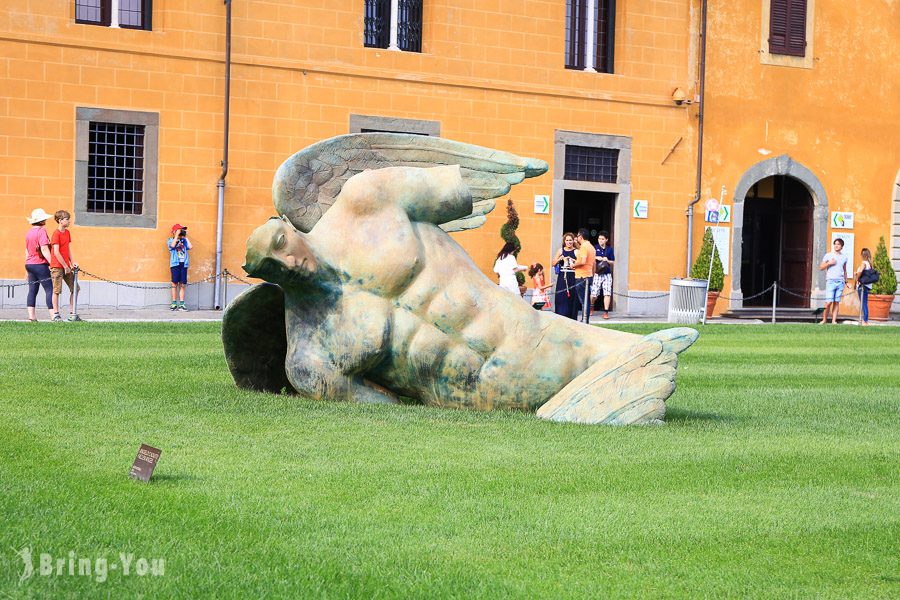
Finally, we have Camposanto Monumentale, a monumental cemetery. It’s a bit younger, dating back to the late 13th century and reaching its final form in the 15th century. Together with the other three, these buildings played a massive role in shaping Italian architectural art from the 11th to the 14th century.
These ensembles have earned their place on the prestigious list of UNESCO World Heritage Sites, recognized for their profound cultural and historical significance.
The Pisa Baptistery of St. John

This baptistery holds the title of Italy’s largest, taking root in the 12th century. A distinguished Gothic dome was plugged into the entrance in the 14th century to give it that timeless look. For that reason, the facade boasts a blend of two gigantic architectural styles: the lower part flaunts Romanesque round arches from the 12th century while the upper part boasts Gothic pointed arches from the 14th century.
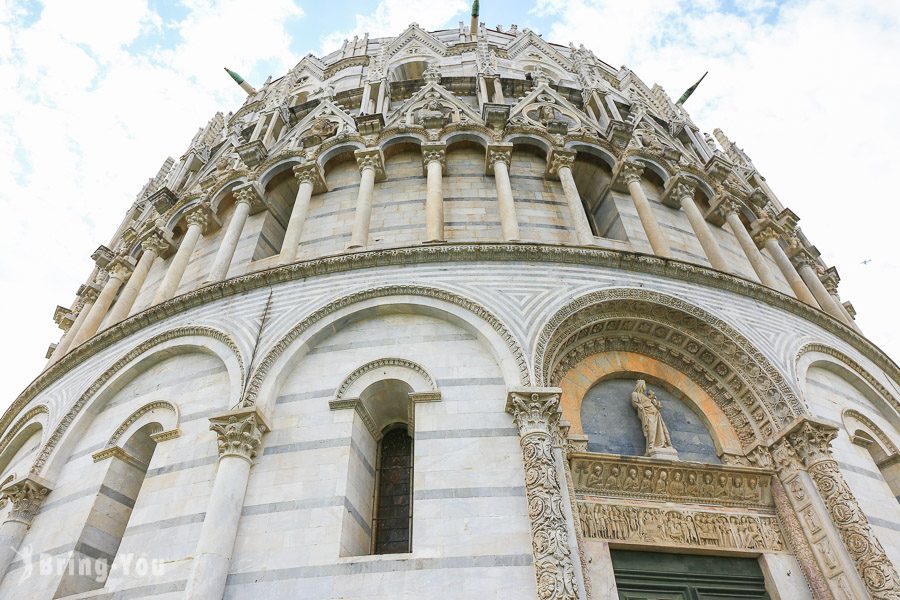
Right behind the Baptistery of St. John stands a magnificent orange-bricked building that serves as the ticket office. Visits to the Baptistery, the Leaning Tower of Pisa, and the cemetery require you to fork out some cash.
The toilets are tucked away in the back too, but keep in mind, it’ll cost you EUR 0.8 for e relief inside.
The Leaning Tower of Pisa
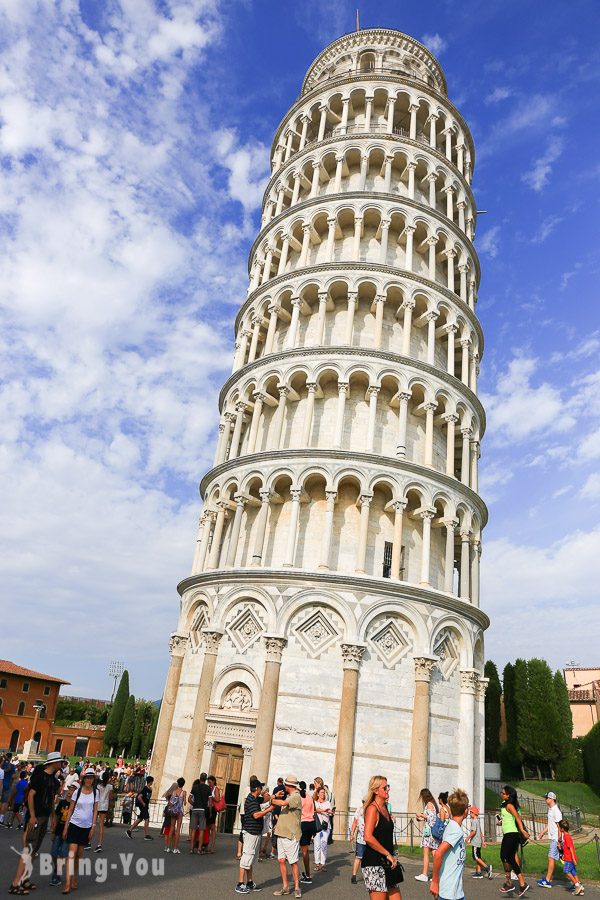
Save the best for last. Finally, you set foot on the ground of the world’s most talked-about ancient building: the Leaning Tower of Pisa.
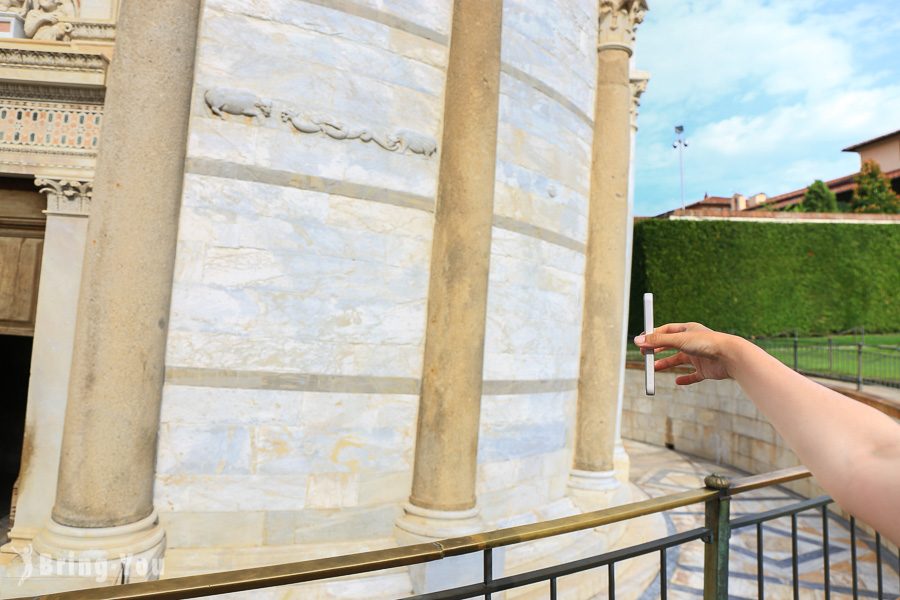
Folks have been scratching their heads, wondering why it tilts. It took curious scientists and archaeologists a good while to uncover the truth. And that didn’t happen until the 20th century with the help of fancy equipment and a deep dive into historical records.
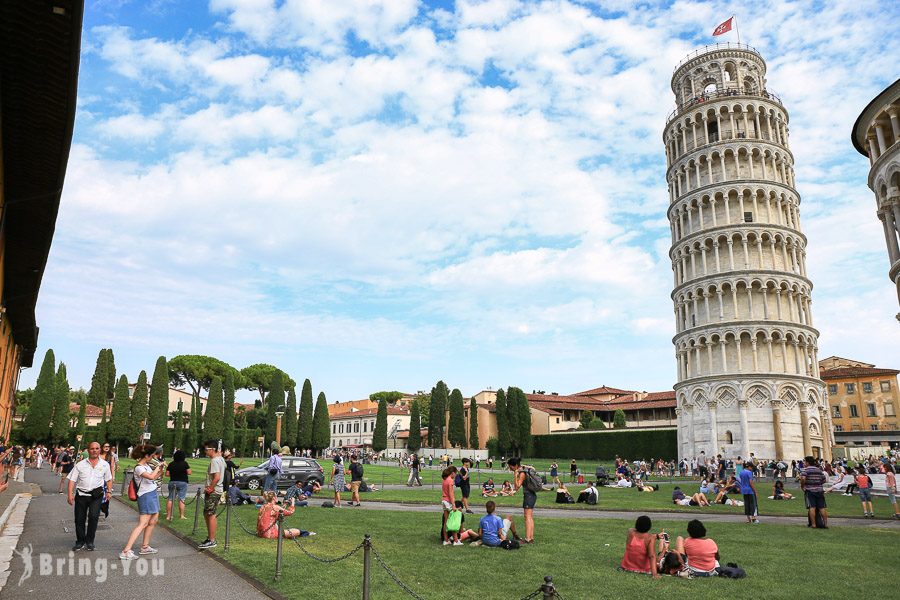
The tower was intentionally built to stand tall and proud. However, as construction got underway, it decided to do its own thing and lean. Historians blamed it on the uneven foundation and the soft soil beneath which is a smashup of different soil types. A groundwater source hidden at the coast’s edge dug the hole deeper. The higher the tower went up, the further the soil was pushed close to the water and began to shift, causing that iconic tilt.
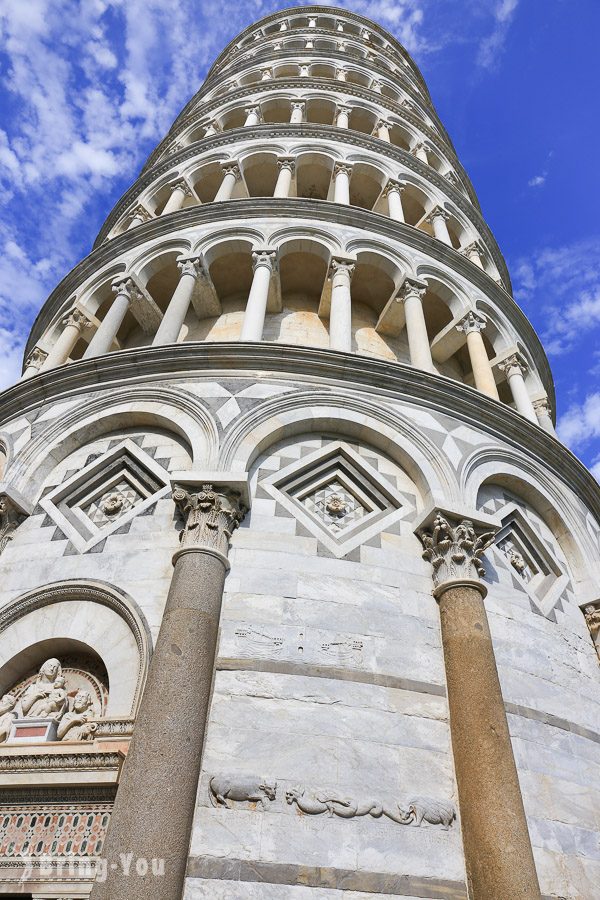
Today, despite confusion and conflicts, the Leaning Tower of Pisa boasts a whopping height of eight stories made of 54.8 meters of creamy white marble.

This iconic building has nothing else to offer beyond its shape. However, the Leaning Tower in Pisa is still worth a day trip from Florence. If your fitness level agrees, climb to the top of the tower and meander down towards the Piazza dei Miracoli to complete your visit.
